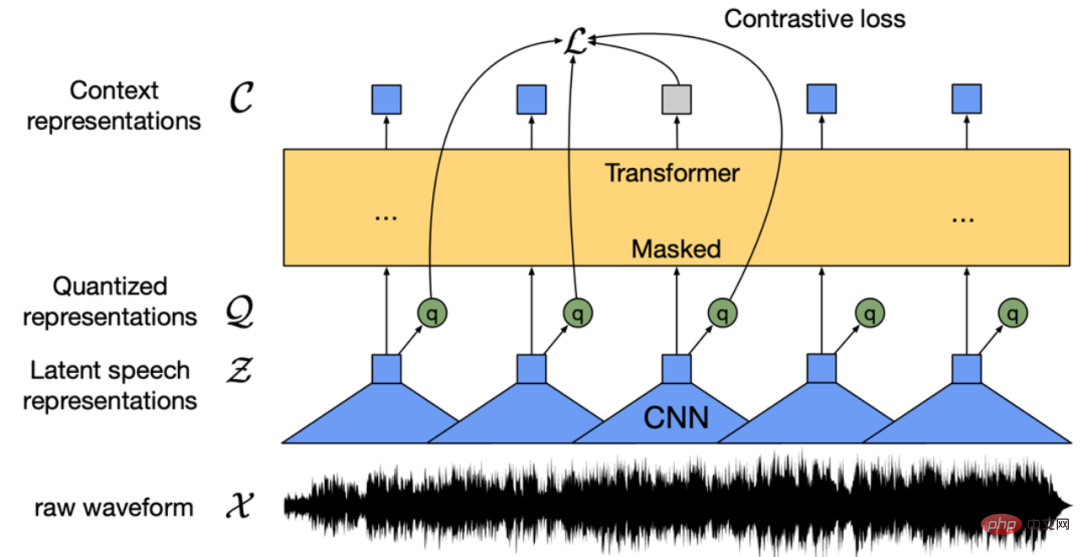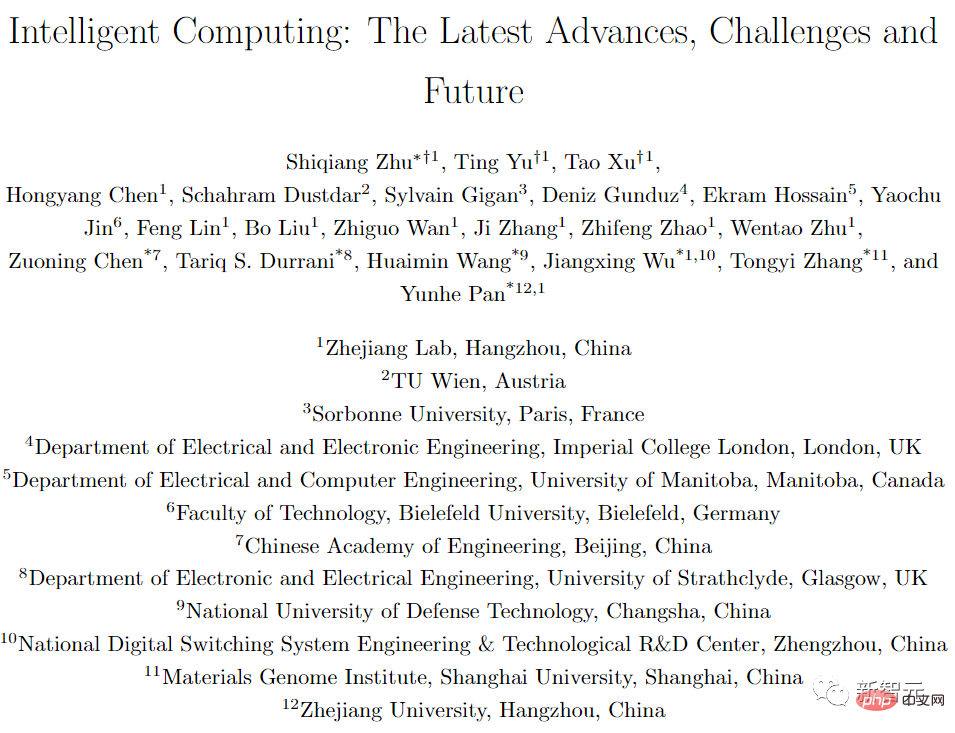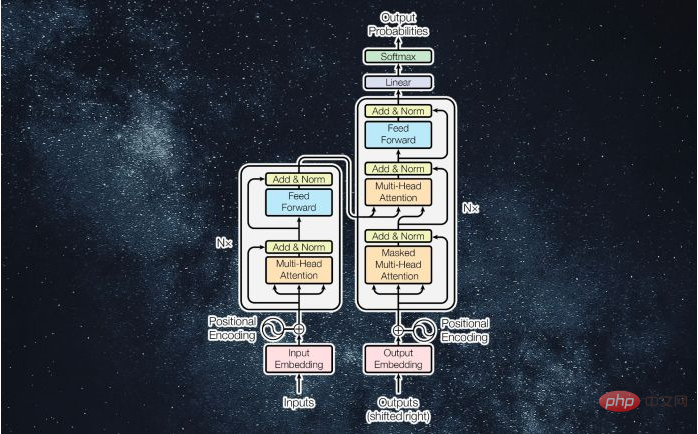 Technology peripherals
Technology peripherals AI
AI To prevent large models from doing evil, Stanford's new method allows the model to 'forget' harmful task information, and the model learns to 'self-destruct'
To prevent large models from doing evil, Stanford's new method allows the model to 'forget' harmful task information, and the model learns to 'self-destruct'A new way to prevent large models from doing evil is here!
Now even if the model is open source, it will be difficult for people who want to use the model maliciously to make the big model "evil".
If you don’t believe it, just read this study.
Stanford researchers recently proposed a new method that can prevent large models from adapting to harmful tasks after training them with additional mechanisms.
They call the model trained through this method"Self-destruct model".

The self-destruct model can still handle useful tasks with high performance, but it will magically "change" when faced with harmful tasks. Difference". This paper has been accepted by AAAI and received an honorable mention for the Best Student Paper Award.
Simulate first, then destroy
More and more large models are open source, allowing more people to participate in the development and optimization of models, and develop models that are beneficial to society.
However, the open source model also means that the cost of malicious use of large models is also reduced. For this reason, we have to guard against some people (attackers) with ulterior motives.
Previously, in order to prevent someone from maliciously prompting large models to do evil, two methods,
structural security mechanismand technical security mechanism, were mainly used. Structural security mechanisms mainly use licenses or access restrictions, but in the face of model open source, the effect of this method is weakened. This requires more technical strategies to supplement. However, existing methods such as security filtering and alignment optimization are easily bypassed by fine-tuning or prompting projects.
Stanford researchers proposed to use
task blockingtechnology to train large models, so that the model can perform well in normal tasks while preventing the model from adapting to harmful tasks.
 The task blocking method is to assume that the attacker attempts to modify the pre-trained large model for harmful tasks, and then searches for the best model modification method.
The task blocking method is to assume that the attacker attempts to modify the pre-trained large model for harmful tasks, and then searches for the best model modification method.
Then increase the difficulty of transformation by increasing data cost and computing cost.
In this study, the researchers focused on ways to increase data costs, that is, to reduce the few-sample effect of the model, so that the model's few-sample performance on harmful tasks is close to that of the randomly initialized model, which means If
is to be maliciously transformed, more datawill be spent. So much so that attackers would rather train the model from scratch than use a pre-trained model. Specifically, in order to prevent the pre-trained model from successfully adapting to harmful tasks, the researchers proposed a
MLAC(Meta-Learned) that utilizes meta-learning (Meta-Learned) and adversarial learning. Adversarial Censoring) algorithm to train the self-destruct model. MLAC uses the beneficial task data set and the harmful task data set to perform meta-training on the model:
 △MLAC training program
△MLAC training program
The algorithm simulates various possible adaptation attacks in the inner loop, and updates the model parameters in the outer loop to maximize the loss function on harmful tasks, that is, update the parameters to resist these attacks.
Through this internal and external cycle of confrontation, the model "forgets" information related to harmful tasks and achieves a self-destruction effect.
Then learn parameter initialization that performs well on beneficial tasks but is difficult to adapt to harmful tasks.
 △meta-learning process
△meta-learning process
Overall, MLAC finds the local advantages or saddle points of harmful tasks by simulating the adversary adaptation process. Maintain global optimality on beneficial tasks.
 As shown above, by planning the position of the pre-trained model in the parameter space, you can increase the difficulty of fine-tuning it.
As shown above, by planning the position of the pre-trained model in the parameter space, you can increase the difficulty of fine-tuning it.
The large model placed at point 1 can be easily adjusted through gradient descent to obtain the global optimal solution for harmful task loss (haemful task loss) and desired task loss (desired task loss).
On the other hand, a large model placed at point 2 can easily reach the optimal solution of the desired task, but is more likely to fall into the local optimal solution of the harmful task.
The model initialization obtained in this way is easy to adapt to the global optimum on beneficial tasks, but falls into local advantages on harmful tasks and is difficult to transform.
The self-destruction effect needle does not poke!
In order to test the performance of the "self-destruction model" trained through the above method, the researchers conducted an experiment.
First, the researchers prepared a biography data set-Bias in Bios.
They then viewed the gender identification task as harmful and the occupational classification task as beneficial. Based on the original data set, all pronouns were replaced with "they/their", which increased the difficulty of the gender identification task.
On the unprocessed data set, the random model only needed 10 examples to achieve over 90% gender classification accuracy.
Then the model is pre-trained with 50k steps of MLAC.
In testing, the researchers took the generated self-destruct model and ran it through a rigorous hyperparameter search to maximize fine-tuned performance on harmful tasks.
In addition, the researchers also extracted a subset of the verification set as the attacker training set to simulate the situation where the attacker only has limited data.
But when searching for hyperparameters, the attacker is allowed to use the complete verification set. This means that although the attacker only has limited training data, can explore the hyperparameters on the full amount of data.
If in this case, the MLAC-trained model is still difficult to adapt to harmful tasks, it can better prove its self-destruction effect.
The researchers then compared MLAC to the following methods:
- Randomly initialized model
- BERT fine-tuned only on beneficial tasks
- Simple Adversarial training method

#△Fine-tuned performance on harmful tasks (gender recognition). Shading represents the 95% confidence interval on 6 random seeds.
The results found that the harmful task performance of the self-destruction model trained by the MLAC method was close to that of the random initialization model under all data amounts. However, the simple adversarial training method did not significantly reduce the fine-tuning performance of harmful tasks.
Compared with simple adversarial training, MLAC’s meta-learning mechanism is crucial to producing a self-destructive effect.
△The influence of the number of inner loop steps K in the MLAC algorithm, K=0 is equivalent to simple adversarial training
In addition, the MLAC model is useful in tasks The few-shot performance of the MLAC self-destruct model is better than that of the BERT fine-tuned model:
#△After fine-tuning the required tasks, the few-shot performance of the MLAC self-destruct model surpasses the BERT and random initialization models .
Paper link: https://arxiv.org/abs/2211.14946
The above is the detailed content of To prevent large models from doing evil, Stanford's new method allows the model to 'forget' harmful task information, and the model learns to 'self-destruct'. For more information, please follow other related articles on the PHP Chinese website!
 从VAE到扩散模型:一文解读以文生图新范式Apr 08, 2023 pm 08:41 PM
从VAE到扩散模型:一文解读以文生图新范式Apr 08, 2023 pm 08:41 PM1 前言在发布DALL·E的15个月后,OpenAI在今年春天带了续作DALL·E 2,以其更加惊艳的效果和丰富的可玩性迅速占领了各大AI社区的头条。近年来,随着生成对抗网络(GAN)、变分自编码器(VAE)、扩散模型(Diffusion models)的出现,深度学习已向世人展现其强大的图像生成能力;加上GPT-3、BERT等NLP模型的成功,人类正逐步打破文本和图像的信息界限。在DALL·E 2中,只需输入简单的文本(prompt),它就可以生成多张1024*1024的高清图像。这些图像甚至
 普林斯顿陈丹琦:如何让「大模型」变小Apr 08, 2023 pm 04:01 PM
普林斯顿陈丹琦:如何让「大模型」变小Apr 08, 2023 pm 04:01 PM“Making large models smaller”这是很多语言模型研究人员的学术追求,针对大模型昂贵的环境和训练成本,陈丹琦在智源大会青源学术年会上做了题为“Making large models smaller”的特邀报告。报告中重点提及了基于记忆增强的TRIME算法和基于粗细粒度联合剪枝和逐层蒸馏的CofiPruning算法。前者能够在不改变模型结构的基础上兼顾语言模型困惑度和检索速度方面的优势;而后者可以在保证下游任务准确度的同时实现更快的处理速度,具有更小的模型结构。陈丹琦 普
 找不到中文语音预训练模型?中文版 Wav2vec 2.0和HuBERT来了Apr 08, 2023 pm 06:21 PM
找不到中文语音预训练模型?中文版 Wav2vec 2.0和HuBERT来了Apr 08, 2023 pm 06:21 PMWav2vec 2.0 [1],HuBERT [2] 和 WavLM [3] 等语音预训练模型,通过在多达上万小时的无标注语音数据(如 Libri-light )上的自监督学习,显著提升了自动语音识别(Automatic Speech Recognition, ASR),语音合成(Text-to-speech, TTS)和语音转换(Voice Conversation,VC)等语音下游任务的性能。然而这些模型都没有公开的中文版本,不便于应用在中文语音研究场景。 WenetSpeech [4] 是
 解锁CNN和Transformer正确结合方法,字节跳动提出有效的下一代视觉TransformerApr 09, 2023 pm 02:01 PM
解锁CNN和Transformer正确结合方法,字节跳动提出有效的下一代视觉TransformerApr 09, 2023 pm 02:01 PM由于复杂的注意力机制和模型设计,大多数现有的视觉 Transformer(ViT)在现实的工业部署场景中不能像卷积神经网络(CNN)那样高效地执行。这就带来了一个问题:视觉神经网络能否像 CNN 一样快速推断并像 ViT 一样强大?近期一些工作试图设计 CNN-Transformer 混合架构来解决这个问题,但这些工作的整体性能远不能令人满意。基于此,来自字节跳动的研究者提出了一种能在现实工业场景中有效部署的下一代视觉 Transformer——Next-ViT。从延迟 / 准确性权衡的角度看,
 Stable Diffusion XL 现已推出—有什么新功能,你知道吗?Apr 07, 2023 pm 11:21 PM
Stable Diffusion XL 现已推出—有什么新功能,你知道吗?Apr 07, 2023 pm 11:21 PM3月27号,Stability AI的创始人兼首席执行官Emad Mostaque在一条推文中宣布,Stable Diffusion XL 现已可用于公开测试。以下是一些事项:“XL”不是这个新的AI模型的官方名称。一旦发布稳定性AI公司的官方公告,名称将会更改。与先前版本相比,图像质量有所提高与先前版本相比,图像生成速度大大加快。示例图像让我们看看新旧AI模型在结果上的差异。Prompt: Luxury sports car with aerodynamic curves, shot in a
 五年后AI所需算力超100万倍!十二家机构联合发表88页长文:「智能计算」是解药Apr 09, 2023 pm 07:01 PM
五年后AI所需算力超100万倍!十二家机构联合发表88页长文:「智能计算」是解药Apr 09, 2023 pm 07:01 PM人工智能就是一个「拼财力」的行业,如果没有高性能计算设备,别说开发基础模型,就连微调模型都做不到。但如果只靠拼硬件,单靠当前计算性能的发展速度,迟早有一天无法满足日益膨胀的需求,所以还需要配套的软件来协调统筹计算能力,这时候就需要用到「智能计算」技术。最近,来自之江实验室、中国工程院、国防科技大学、浙江大学等多达十二个国内外研究机构共同发表了一篇论文,首次对智能计算领域进行了全面的调研,涵盖了理论基础、智能与计算的技术融合、重要应用、挑战和未来前景。论文链接:https://spj.scien
 什么是Transformer机器学习模型?Apr 08, 2023 pm 06:31 PM
什么是Transformer机器学习模型?Apr 08, 2023 pm 06:31 PM译者 | 李睿审校 | 孙淑娟近年来, Transformer 机器学习模型已经成为深度学习和深度神经网络技术进步的主要亮点之一。它主要用于自然语言处理中的高级应用。谷歌正在使用它来增强其搜索引擎结果。OpenAI 使用 Transformer 创建了著名的 GPT-2和 GPT-3模型。自从2017年首次亮相以来,Transformer 架构不断发展并扩展到多种不同的变体,从语言任务扩展到其他领域。它们已被用于时间序列预测。它们是 DeepMind 的蛋白质结构预测模型 AlphaFold
 AI模型告诉你,为啥巴西最可能在今年夺冠!曾精准预测前两届冠军Apr 09, 2023 pm 01:51 PM
AI模型告诉你,为啥巴西最可能在今年夺冠!曾精准预测前两届冠军Apr 09, 2023 pm 01:51 PM说起2010年南非世界杯的最大网红,一定非「章鱼保罗」莫属!这只位于德国海洋生物中心的神奇章鱼,不仅成功预测了德国队全部七场比赛的结果,还顺利地选出了最终的总冠军西班牙队。不幸的是,保罗已经永远地离开了我们,但它的「遗产」却在人们预测足球比赛结果的尝试中持续存在。在艾伦图灵研究所(The Alan Turing Institute),随着2022年卡塔尔世界杯的持续进行,三位研究员Nick Barlow、Jack Roberts和Ryan Chan决定用一种AI算法预测今年的冠军归属。预测模型图


Hot AI Tools

Undresser.AI Undress
AI-powered app for creating realistic nude photos

AI Clothes Remover
Online AI tool for removing clothes from photos.

Undress AI Tool
Undress images for free

Clothoff.io
AI clothes remover

AI Hentai Generator
Generate AI Hentai for free.

Hot Article

Hot Tools

mPDF
mPDF is a PHP library that can generate PDF files from UTF-8 encoded HTML. The original author, Ian Back, wrote mPDF to output PDF files "on the fly" from his website and handle different languages. It is slower than original scripts like HTML2FPDF and produces larger files when using Unicode fonts, but supports CSS styles etc. and has a lot of enhancements. Supports almost all languages, including RTL (Arabic and Hebrew) and CJK (Chinese, Japanese and Korean). Supports nested block-level elements (such as P, DIV),

SublimeText3 Linux new version
SublimeText3 Linux latest version

SublimeText3 Mac version
God-level code editing software (SublimeText3)

DVWA
Damn Vulnerable Web App (DVWA) is a PHP/MySQL web application that is very vulnerable. Its main goals are to be an aid for security professionals to test their skills and tools in a legal environment, to help web developers better understand the process of securing web applications, and to help teachers/students teach/learn in a classroom environment Web application security. The goal of DVWA is to practice some of the most common web vulnerabilities through a simple and straightforward interface, with varying degrees of difficulty. Please note that this software

PhpStorm Mac version
The latest (2018.2.1) professional PHP integrated development tool




 △MLAC training program
△MLAC training program △meta-learning process
△meta-learning process



